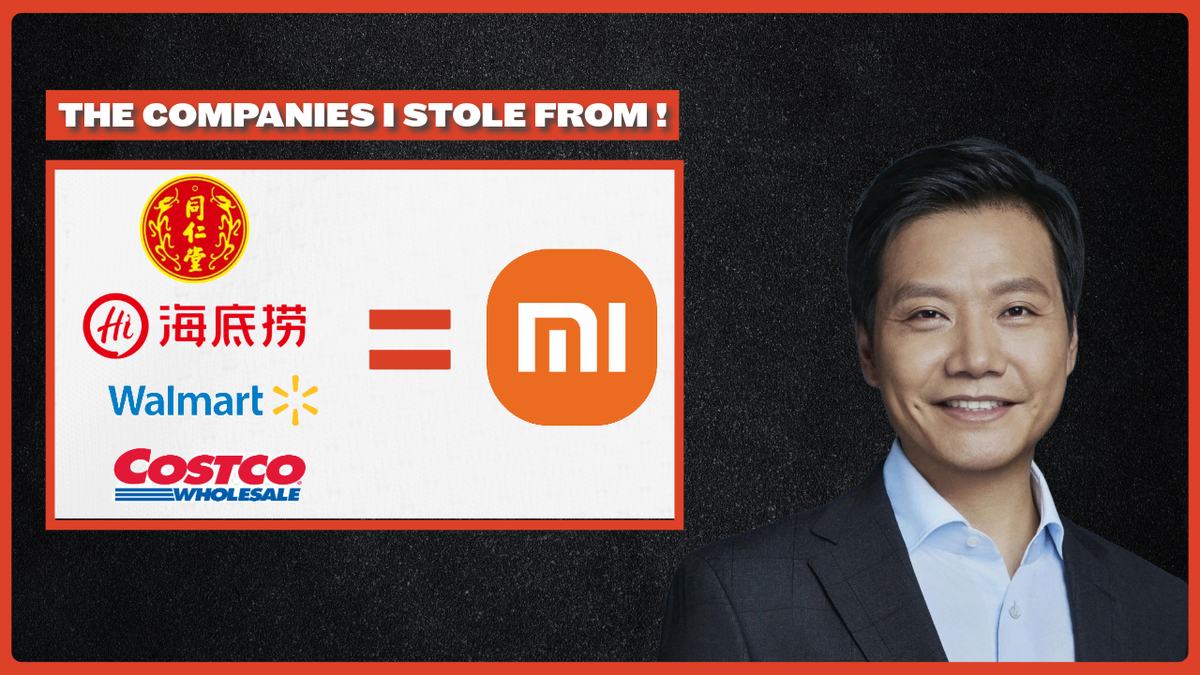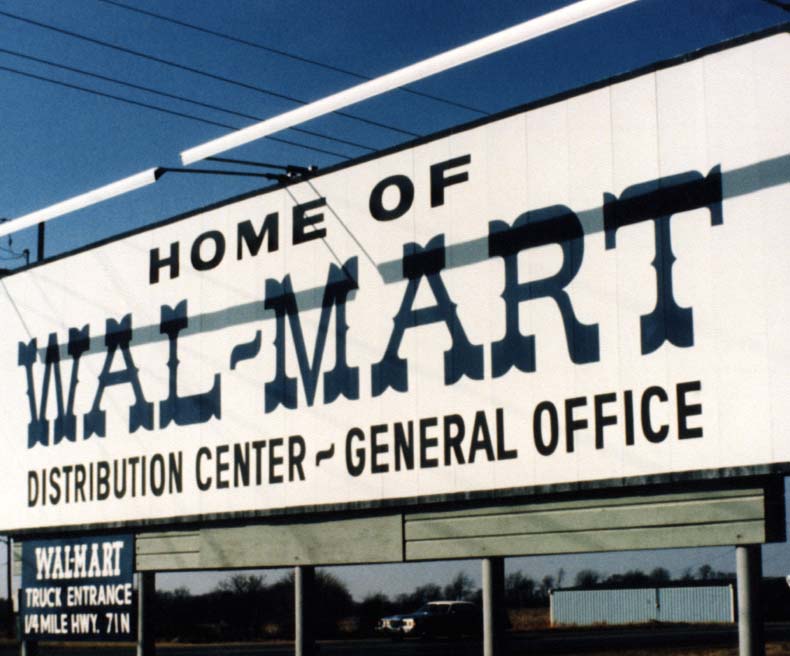How Xiaomi Stole From Costco & Walmart

The following post focuses on the lesson Lei Jun, Xiaomi's founder, learned from Costco & Walmart in improving efficiency.
This is a follow on from the second post.
Once again, the original speech can be found here.
(Keith's little note: 1) In translating this speech, I tried to be true to the spirit of his words and did not translate it word for word. If you want a literal translation, ChatGPT could do it for you 2) I add parentheses for commentary)
Learning from Walmart and Costco: Low Margins As a Function For Driving Efficiency

After discussing Tongrentang and Haidilao, the third company I want to talk about is Walmart.
In 1962, Sam Walton founded a grocery store in his hometown of Rogers, Arkansas. He discovered that the average gross profit margin in the retail industry was 45%.
Old Sam thought, "At 22%, could I survive on half of their margins?" With lower prices, he could create sales volumes several times those of his competitors and make a healthy profit.

Hence, "Always Low Prices" became Walmart's founding slogan.
Butwhen you consider the dynamics of free-market competition*, when other chain stores were making 45% profit margins on their goods sold, Walmart's 22% profit margin would, in theory, cause them to not only be unprofitable but alsomake serious losses.
*The prevailing assumption then was that the market was already efficient. Any drop in prices would threaten the long-term viability of any retailer. This also explained why most grocers back then were mom-and-pop shops who expressed no interest in expanding.
Sam thought about it long and hard. He thought that as long as consumers could save $100 per trip, they would be willing to drive ten miles away. Thus, he chose not to set up in the city centre.
He found an old warehouseand reduced his costs to the lowest possible level so that even with his gross margin cut in half, he could still have a few percentage points of net profit.
As a result, Walmart became the world's leading retail corporation in thirty years. This outcome is a result of high efficiency.
Our business schools sometimes teach us rigid and sloppy concepts, which have now percolated into the questions we investors ask, such as "Can we have a higher gross margin?"
"Of course you can! Either by cutting costs on materials or by raising prices. Are there any other ways to increase gross margins?"
When investing, I particularly dislike products with very high gross margins. I have always believed that pursuing high gross margins is a dead end for large-scale industrial finished products.
The Chinese market for such products has traditionally been characterised by exorbitant prices, where even slightly better quality commands an unreasonable price premium.

In 2011,a few Kingsoft executives and I traveled to the United States. Upon landing, our CEO immediately rented a car and headed straight to Costco, America's largest chain of membership warehouse stores. Some of them followed suit, and when they returned, they were all visibly excited.
Puzzled, I asked a colleague to explain their enthusiasm.

He provided a striking example: two large Samsonite suitcases, typically priced at over 9,000 yuan in China, were available at Costco for just $150 – approximately 900 yuan at the time.
This price disparity was staggering!
In the United States, where housing, land, and labor costs are generally high, these suitcases were selling for merely one-tenth of their price in China. The irony wasn't lost on us: despite earning only one-sixth to one-tenth of American wages, Chinese consumers were expected to pay ten times more for the same product.
The economic absurdity of this situation was clear as day to me.
My subsequent research into Costco revealed why the company is truly remarkable. Despite having stores roughly a quarter the size of Walmart's, Costco offers only two or three brands per item category - all of exceptional quality and at incredibly competitive prices.
Their business model is built on a striking principle: all goods are priced with a mere 1% to 14% gross margin.
This pricing strategy is so integral to their operation that any markup exceeding 14% requires CEO approval, followed by board authorization - a deliberately cumbersome process.
Upon examining their financial reports, I discovered their average gross margin is a mere 7%, a figure typically unsustainable for large-scale retail chains in the United States.
Costco's profitability hinges on their membership model.
Customers must become members to make purchases. With over 20 million individuals paying an annual fee of $100, they could offer great value for their customers while maintaining their financial viability.
Unsurprisingly, our entire group promptly became Costco members.
This brings me back to my central question of interest: Is it better for a company to have a higher gross margin?
Applying the Lessons to Xiaomi
Companies with high gross margins are often not incentivized to be maximally productive and thus have very low efficiency.
What is truly impressive is working efficiently with low margins.
BTS of how a Xiaomi phone is made
Xiaomi started with zero margins, relying on large-scale production to achieve a gross margin of about ten per cent.
Our key success factor lies in controlling Xiaomi's overall operating costs at an amazingly low level (currently, Xiaomi's revenue areas have expanded from hardware to the internet, e-commerce platforms, finance, and other fields. Our OPEX, or operating expense ratio, is between 8% and 10%).
Without being modest, we are the most operationally efficient company in the world.
Naturally, we cannot hire too many people and do too many things.
Our operating philosophy is: less is more.
We must focus.
Simplicity is our competitive advantage.
We begin with complexity, but over time, we simplify the complexity.
Walmart and Costco's retail models have taught me a crucial lesson: low margins are the key to success. These slim profit margins force companies to relentlessly improve operational efficiency.
This dynamic is at the core of Xiaomi's strategy.
By pricing our products close to cost, we've made high efficiency not just an advantage but a necessity. Without it, our company would face catastrophic losses.
I don't remember the source, but I recall this quote saying, "It's a crime for businesses not to make money, and the social mission of businesses is to make money and improve efficiency." Since we don't want to exploit users but still want to make money, we can only exploit our collective intelligence to improve efficiency continually.
Therefore, we spare no effort to attract top talent from all fields.
Human capital is paramount for a company as dedicated to efficiency as ours. In the early stages of the company, we tried to hire as few people as possible, but we had one requirement: all recruits must have at least ten years of working experience.
I believe that only with such experience can a company develop rapidly without crashing.
Now, its time for a summary.
When starting up Xiaomi, I learned from these companies: Tongrentang, Haidilao, Walmart, and Costco.
First, we approach product development like Tongrentang—with integrity and genuine self-belief. I personally use everything we sell. If we have not done well, please forgive us. We are only three years into this journey, and we still need time.
Second, we learned from Haidilao the power of exceeding customer expectations, which will help us create a product experience that customers will rave about.
Third, we learned about operational efficiency from companies like Walmart and Costco. Although we are an e-commerce company,we are also firmly rooted in manufacturing. When it comes to succeeding in our industry, efficiency is the key to success.
Of course, there are two main approaches to improving efficiency. One is like wringing out a towel - primarily focused on squeezing internal costs. While I agree with this method, I mainly employ the other approach: model optimisation. This involves streamlining the intermediary stages in the commercial distribution chain as much as possible.
We aim to do less, using the smartest people to simplify processes.
Xiaomi continuously invests in scaling our process innovations to enhance production efficiency, thereby allowing us to cut our operating costs substantially.
In the consumer electronics industry, the markup from manufacturing cost to retail price (after factoring in channel and retail store profit) typically ranges from two to three times.
Why are traditional phones so expensive? Or rather, why are all traditional services so costly?
The answer is inefficiency.
China's stagnant traditional retail landscape has enabled the rapid growth of e-commerce.
Financial reports show that JD.com spends 10% of its revenue on operations. If Costco only needs 7%, do you think Costco would be significantly affected by JD.com when JD enters the US?
Any impact would not be substantial.
Therefore, the key question lies in how we can improve operational efficiency.
The core of e-commerce is efficiency.
(This includes omnichannel, where we aim to introduce and sell our products to the mass market. We officially entered the retail market in 2016, but we ensured prices were the same as our online offerings to ensure we maintained a high level of efficiency.)
The omni-channel model has advantages and superiority, but if we don't manage our costs well, it will be difficult to turn a profit.
With that, I wrap up what I have learned from the companies I have studied.